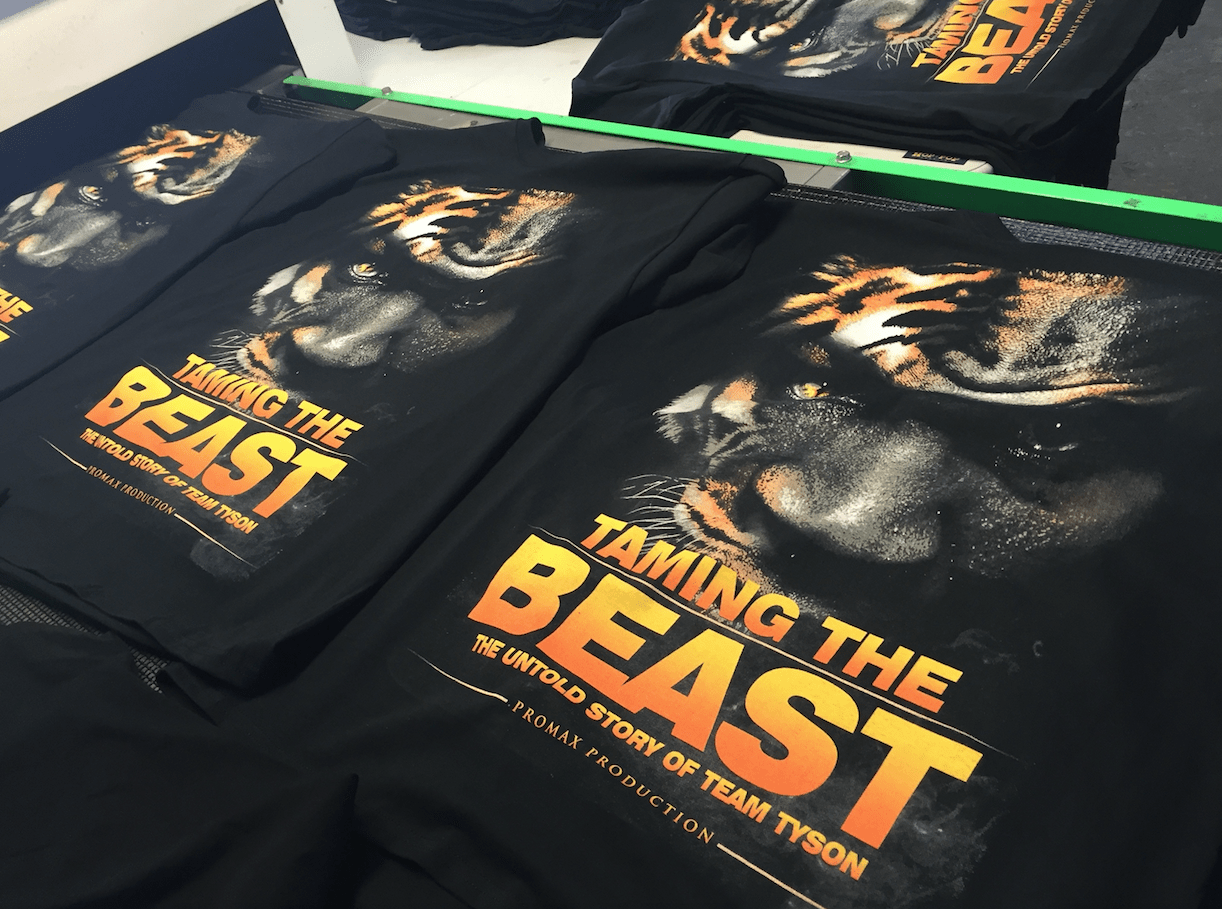Durable T-Shirt Printing for Everyday Wear
Wiki Article
Screen Printing Uncovered: Every Little Thing You Required to Know About T-Shirt and Garment Printing Strategies
Screen printing is a fascinating method that integrates art with method, providing unlimited opportunities for imagination. Ready to check out the important aspects that make display printing an art type?
The Fundamentals of Screen Printing: How It Functions
When you plunge into display printing, you'll discover it's both an art and a scientific research. At its core, display printing includes developing a pattern, or display, that permits ink to travel through only in specific locations (screen printing kit). You begin by picking your layout and preparing your display with a light-sensitive emulsion. Once you expose this solution to light, it sets, leaving your layout as an unfavorable room.Next, you'll mix your inks and prepare your printing surface. Placement the screen over the fabric, then make use of a squeegee to push ink with the screen onto the garment. This process requires precision, as you desire clear, dynamic prints. After printing, you'll heal the ink with heat, guaranteeing it sticks to the textile and lasts via cleans. Each step is crucial, and understanding them will elevate your screen printing skills, transforming simple garments into distinct, expressive items.
Kinds of Display Printing Methods
When you realize the basics of screen printing, it's time to check out the numerous methods that can elevate your styles. One prominent method is conventional screen printing, where ink is pressed with a stenciled screen. This technique is terrific for strong, dynamic colors. Then there's water-based ink printing, which offers a softer feel and is environment-friendly, but it calls for a different approach to treating.If you're aiming for great details, think about discharge printing. This strategy removes dye from the fabric, leaving a soft, vintage look. Another choice is plastisol printing, recognized for its sturdiness and vivid colors, making it a favored for lots of brand names. Lastly, try out halftone printing to create gradient results and elaborate designs. Each technique has its one-of-a-kind charm, so do not be reluctant to attempt them bent on find what fits your design best!
Important Equipment for Display Printing
To achieve sensational cause screen printing, having the appropriate devices is essential. You'll require a strong screen printing framework, which holds the mesh that transfers your design onto the garment. Next off, buy high-quality squeegees; these are essential for using ink uniformly throughout the display. You'll additionally call for an excellent direct exposure unit to develop your displays, along with a washout booth for cleaning them after usage. A trustworthy heat source, like a conveyor dryer or warm press, is critical for curing your prints to guarantee durability. Don't fail to remember a correct work area, geared up with tables and storage space for your supplies. Safety equipment, such as masks and handwear covers, will certainly keep you safe from chemicals and inks. With the right tools, you'll be well on your way to creating professional-quality prints.Selecting the Right Inks and Materials
When choosing inks and products for screen printing, you need to consider the kind of ink that works best for your job. Think of textile compatibility to assure your layouts look last and excellent lengthy. Likewise, check out green ink options to make your printing procedure more lasting.Types of Display Inks
Selecting the right display ink is vital for achieving lively, durable prints that meet your job's requirements. There are several sorts of display inks to check out. Plastisol ink is prominent for its versatility and convenience of usage, giving superb shade opacity on dark materials. Water-based ink, on the various other hand, supplies a softer feeling and is environmentally friendly, making it suitable for those looking to minimize their ecological impact. Discharge inks get rid of dye from the textile, leading to a soft, classic appearance but require details handling. Specialized inks, such as metallic or glow-in-the-dark, can include special results to your layouts. Evaluate your project needs and choose the ink that straightens finest with your preferred result.
Fabric Compatibility Considerations
Comprehending textile compatibility is essential for attaining top quality screen prints, especially because different materials react uniquely to different inks. When selecting inks, consider the material kind-- cotton, polyester, or blends. For cotton, water-based inks work well, using softness and breathability. Polyester, on the other hand, usually needs plastisol inks for far better adhesion and vibrant colors. You may require to use a combination of both types if you're printing on blends. Always test your inks on example material to guarantee they stick appropriately and maintain shade honesty. Furthermore, remember that material weight and texture can affect the last result, so selecting the ideal ink and material combination is crucial for your project's success.Eco-Friendly Ink Options
Environmentally friendly inks are coming to be a popular option for display printers who want to lessen their ecological influence while keeping top quality. When choosing inks, take into consideration water-based inks, which are much less harmful and easier to cleanse up contrasted to typical solvents.In addition, try to find inks made from renewable energies, such as soy or vegetable-based choices. By selecting the ideal inks and products, you'll not just produce magnificent designs yet additionally add to a more sustainable printing procedure. Make the button, and your prints will mirror your dedication to the environment!
Preparing Your Style for Display Printing

Submit Layout Demands
To ensure your style looks sharp and lively on fabric, you'll need to pay close interest to file layout needs for display printing. Beginning with vector documents like AI or EPS, as they can be scaled without shedding high quality. If you utilize raster images, select high-resolution documents, such as TIFF or PNG, ideally at 300 DPI. Prevent utilizing JPEGs, as they can lose clearness when resized. Likewise, ensure your layout has a transparent history to protect against undesirable garment printing white sides on your prints. Lastly, maintain shade settings in mind; CMYK is common for display printing, so transform your RGB makes appropriately. By following these guidelines, you'll establish your art work up for a successful print.Color Splitting Up Methods
Color splitting up is a necessary step in preparing your design for display printing, and understanding it can considerably enhance your print top quality. You'll need to damage your layout into individual shades, as each shade requires a separate display during printing. This precision not only assures exact shade depiction but also simplifies the printing procedure.Resolution and Size
Accomplishing the most effective lead to display printing starts with assuring your design has the right resolution and size. Preferably, your art work needs to be at least 300 DPI (dots per inch) for sharp, clear prints. If you use reduced resolution, your last product could look less than professional and pixelated.When it involves size, think about the measurements of your print area. Style your artwork to match the last print size, ideally producing it in the actual dimensions you'll be publishing. By doing this, you'll avoid any kind of unanticipated scaling problems.
Constantly inspect your style in both vector and raster formats. Vector graphics can be scaled without shedding top quality, making them suitable for display printing. Preparing properly will ensure your design looks remarkable on every garment!
Step-by-Step Display Printing Process
Display printing is a dynamic process that enables you to develop vibrant designs on different surface areas. To obtain begun, you'll need a screen, solution, and your picked ink.After cleaning out the unexposed emulsion, your screen prepares. Establish it up on your printing surface area and straighten your garment under it. Put ink onto the screen and utilize a squeegee to push the ink via the stencil onto the textile. Lift the screen very carefully and let the print completely dry. Treat the ink using warmth to assure sturdiness. That's it! You have actually successfully display printed your style.
Tips for Successful Screen Printing Projects
While you're diving right into your display printing projects, bear in mind that prep work is vital to success. Beginning by collecting all your products-- inks, screens, squeegees, and garments. A clean workspace aids stop unwanted mistakes, so clean before you start.Next, verify your art work is high-resolution and correctly sized for your garment. Test your display for appropriate exposure and tidy it extensively to avoid spots. When blending your inks, adhere to the supplier's standards to attain the appropriate uniformity.
During printing, use even stress with your squeegee for constant results. Do not rush; take your time to validate each print fulfills your requirements. After printing, let your garments completely dry totally before handling or packaging them.
Last but not least, always maintain an example of your work for future reference. By doing this, you can assess your progress and improve your strategies with time. Delighted printing!

Regularly Asked Inquiries
Just how Lengthy Does It Require To Establish a Screen Printing Work?
Establishing up a screen printing work normally takes about 30 minutes to an hour. You'll prepare the displays, mix inks, and adjust journalism. The moment differs based upon intricacy and experience, so remain arranged!Can I Print on Different Textile Keys In Using the Exact Same Technique?
Yes, you can print on different textile types making use of the exact same technique, yet you'll need to readjust your inks and settings. Some textiles soak up ink differently, so trying out warranties the finest outcomes for every material.What Are Usual Mistakes to Stay Clear Of in Screen Printing?
When screen printing, stay clear of typical mistakes like utilizing the wrong ink, overlooking proper exposure times, or skipping pre-press checks. Always evaluate your configuration and keep tidy displays to guarantee quality results each time.Just How Can I Effectively Clean and Keep My Screen Printing Devices?
To effectively tidy and maintain your display printing devices, you must frequently clean screens with ideal solvents, check mops for wear, and ensure all tools are kept dust-free and dry. Consistency enhances and prevents costly repair work efficiency.Is Display Printing Eco Pleasant Contrasted to Various Other Approaches?
Screen printing can be a lot more environmentally friendly than other techniques, specifically if you utilize eco-conscious materials and water-based inks. By picking sustainable products and methods, you minimize waste and decrease your effect on the earth.Display Printing Uncovered: Every Little Thing You Required to Know About T-Shirt and Garment Printing Methods
At its core, display printing entails creating a stencil, or display, that permits ink to pass through just in certain locations. Placement the display over the textile, then use a squeegee to press ink through the display onto the garment. One prominent approach is traditional screen printing, where ink is pushed through a stenciled screen.When choosing inks and materials for display printing, you need to take into account the type of ink that functions finest for your project.
Report this wiki page